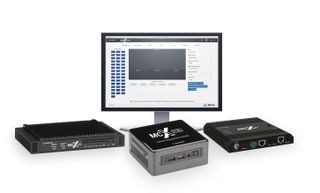The What: Black Box has released the MCX Gen 2 Controller, an all-in-one network controller and manager for the Black Box MCX AV-over-IP (AVoIP) multimedia distribution and management system.
[The Integration Guide to AVoIP]
Enabling complete control over the MCX system, the new controller simplifies setup and management of MCX AVoIP systems, facilitates full asset tracking of devices with real-time status monitoring and offers strong security to ensure continual protection of data and content.

The What Else: The Black Box MCX system takes advantage of software-defined video over Ethernet (SDVoE) and modern 10 GbE infrastructure to accelerate consolidation of AV and data on a single IT network, in turn helping organizations to reduce network management time and costs as well as total cost of ownership. Ensuring almost zero latency, as well as instantaneous switching and bandwidth efficiency, MCX enables users to leverage existing infrastructure for delivery of better-quality audio and video.
The new MCX Gen 2 Controller streamlines setup by accepting CSV imports and allowing users to assign icons to source and display endpoints for easy identification. Users can create browser-based interfaces to control essential functions for the control matrix, video wall, and multiview functions as well as external devices—including displays and media players. The controller also boasts flexible EDID handling with full reporting of monitor information. A PIN-coded QR system supports creation of no-touch UIs, making setup of touch panels and control boards both simple and cost-free.
The Bottom Line: Status reports include real-time data on source and display operations, as well as encoder/decoder operations. The controller supports granular testing of encoder/decoder functionality, as well as any attached IR or RS-232 devices. Firmware management capabilities include reboot and reset options for individual endpoints and groups of endpoints. With options for automating events and scheduling present commands, users can minimize the need for user intervention and increase overall efficiency in distribution and management. Individually encrypted encoder/decoder pairings enhance protection against unauthorized content viewing, and permission settings offer control over routing for further security.










